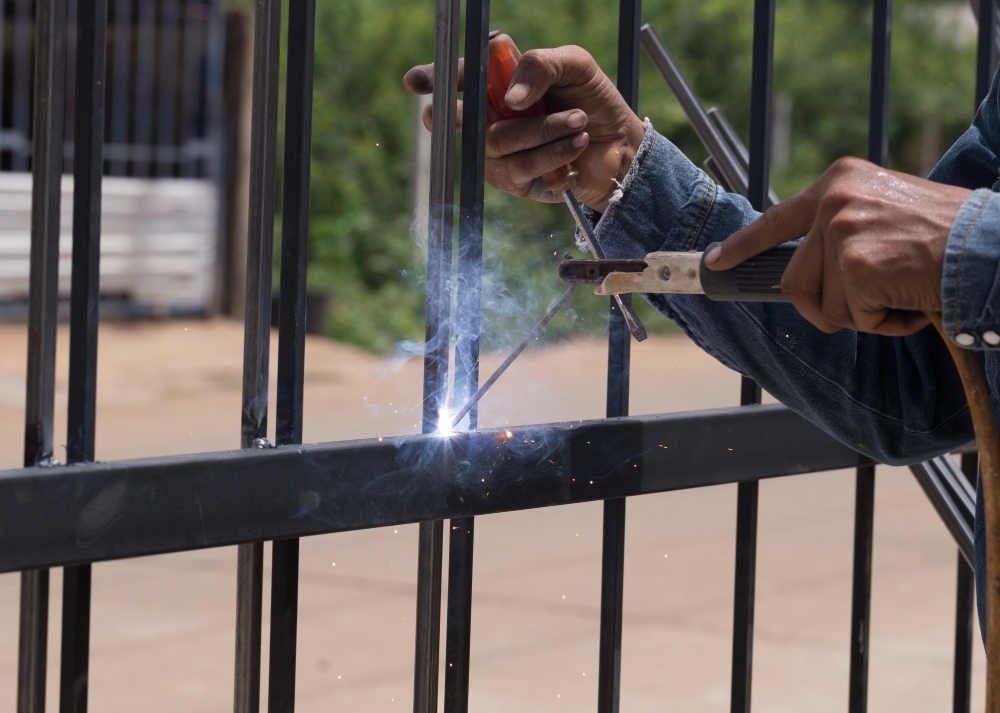At Galveston Deck Builder, we provide expert fencing solutions tailored to the unique needs of homeowners and businesses in the area. Whether you need a new fence for security, privacy, or curb appeal, our contractors deliver high-quality craftsmanship using durable materials built to withstand Galveston's coastal climate. If you're searching for a fence company near me that prioritizes precision and longevity, our team is here to help with customized solutions.
In addition to installations, we specialize in fence repair, addressing issues such as storm damage, rotting wood, or leaning posts. Our fence post repair services reinforce structural integrity, extending the life of your existing fence without a full replacement. For those looking for fence contractors near me, we offer fast, reliable service to restore and enhance your property's fencing. Contact us today for a free consultation and quote.

We offer expert craftsmanship from fence installation to repair using top-quality materials for residential and commercial properties.
A professionally installed fence enhances your property's security, privacy, and curb appeal. Our fence installation near me services include:
Wondering about the fence installation cost? Contact us for a free quote tailored to your specific needs.
Fences can wear down due to weather, age, or impact. If you're searching for fence repair near me, our team offers:
Our fence repair services ensure your fence remains sturdy and functional for years.
A fence gate is more than just an entry point—it adds style and security to your fencing system. We design and install:
Whether you're installing fence posts for a new fence or need a stylish upgrade, we've got you covered.
We follow a seamless, hassle-free process to deliver durable, high-quality fencing solutions tailored to your needs.
We assess your needs and provide a transparent, no-obligation estimate.
Choose from various materials and styles tailored to your property.
Our expert fencing contractors ensure precise and durable installation.
We offer repairs, adjustments, and maintenance to keep your fence in shape.
Many homeowners search for fence installation costs before starting their project. The price varies based on:
At Galveston Deck Builder, we offer transparent pricing and competitive rates. Contact us today for a free quote!
With years of experience, skilled fencing contractors, and a commitment to excellence, we are Galveston's trusted choice for premium fencing services.
✔ Experienced & Professional Fence Contractors
✔ High-Quality Materials for Long-Lasting Fences
✔ Affordable Fence Installation Cost
✔ Licensed, Bonded, and Insured
✔ Top-Rated "Fence Contractors Near Me" in Galveston
When searching for fence contractors near me, you need a team that understands Galveston's climate, soil, and aesthetic needs. From stylish vinyl fencing to durable corral fences, we ensure quality work that stands the test of time.
The cost of installing a fence depends on the type of fence, materials used, labor, and project size. On average, homeowners in Galveston can expect to pay between $15 and $45 per linear foot. Contact us for a free quote based on your specific needs.
Most fence installation projects take 2 to 5 days, depending on the size, material, and weather conditions. Custom fences or complex designs may take longer.
Yes! If your fence is structurally sound but has minor damage, our fence repair near me services can fix broken panels, reinforce fence posts, and restore its look and functionality.
Yes, Galveston may require a permit for fence installation, especially for taller fences or those near public property. Our team helps with the permit process to ensure compliance with local regulations.
The most durable options are vinyl fencing, aluminum fences, and treated wood fences. Vinyl fences require minimal maintenance and resist rot, while metal fences offer superior strength.
Yes! We offer pool and pond fencing to improve safety and meet code requirements. Our pool fences are designed to be both stylish and secure, keeping your loved ones safe.
Upgrade your property with a durable, professionally installed fence by Galveston Deck Builder. Whether you need fence installation near me, skilled fencing contractors, or expert fence repair, we provide reliable solutions tailored to your needs.
Contact us today for a quote, and let's build a fence that lasts!
